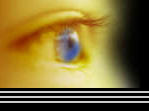Exploring The Egyptian Book of the
Dead
By James Donahue
There was a time not too many years ago when secret societies existed that kept such
manuscripts as The Egyptian Book of the Dead in hiding. It was something that only certain esoteric magicians dared to use
in casting spells and working their charms.
Needless to say, that time has long passed and the document is not only exposed, but
printed on line for anybody to read at their leisure. And lo . . . it is not only a book of strange incantations to a myriad
of long forgotten Egyptian gods and goddesses, but it is a book that gives us some insight into the complex religious life
of a dead civilization that once impacted the course of history.
For those who have trouble devoting their lives to all of the intricacies of living
within the doctrines of contemporary religious organizations, with no more than a single god to deal with, consider the problems
the ancient Egyptians must have had in just getting through a single week, or day for that matter.
The Egyptian religion based on polytheism involved the worship of an estimated 2000
gods and goddesses. They each represented a specific earth force or “heavenly power” ranging from Ra, the Sun
god, to Osiris, the god of the underworld. Many of these gods were depicted in the carvings and art still found in the ancient
stone temples and other structures still found in the region. The figure of Horus, the parallel to Jesus in the Christian
faith, was depicted as a man with the head of a hawk.
There was complex Egyptian mythology interlaced with the religious beliefs. The most
common story, of course, involves the relationship between the goddess Isis and Osiris, which produced the hawk-headed son,
Horus.
The Egyptians considered animals like the bull, cats and even the crocodile to be holy.
The most powerful gods were Amon-Ra, who was not only the sun god but lord of the universe, and Osiris, the god of the underworld
who assured a peaceful afterlife.
And this is where the Book of the Dead enters the picture. The Egyptians spent their
lives preparing for death. It was such an important part of their religion that they devoted most of their time and energy
preparing for the journey into the “next world.”
The book was known among the Egyptians as the Book of Coming Forth By Day. It contained
incantations, prayers and spells designed to help them pass from death into the next world. Thus every coffin, or sarcophagus
for the wealthy and ruling class had the entire book placed inside with the body before it was placed in the tomb. Some of
the coffins had the book inscribed in the stone, either on the exterior or interior. Sometimes it was carved on the inside
walls of the stone tomb. In later years the document was carefully inscribed on papyrus rolls and placed alongside the body,
or under the head like a pillow.
One might imagine the hours of work it would take to cut a volume of material, containing
12 separate books filled with hymns, instructions, spells, charms, passwords and the many rituals to be conducted by the spirits
of the dead before they could successfully pass on to the new world, the Egyptian version of the Christian Heaven. It is small
wonder that the idea of writing the words on parchment made from papyrus appealed to workers once the idea was introduced.
The Books of the Dead were often illustrated with art work showing the various tests
that the dead were to face on their travels.
Perhaps the most crucial test involved the weighing of the heart of the dead person.
This heart was weighed against a feather. If the heart was not weighed down with sin and proved lighter than the feather,
the subject was allowed to pass on. It was believed that the god Thoth recorded the results of the test. If the heart was
unworthy it was consumed by a monster called Ammit.
Thus even after great preparation, the Egyptians must have experienced death with the
same kind of fear and trepidation that Christians do today. Failure to pass the test of judgment might mean that they cannot
reach the new world of their dreams.
The earliest appearance of the Book of the Dead occurred between 2300 and 2600 BC.
During this period the text appeared on the inner walls of the tombs. The coffin text appeared during the Eighteenth Dynasty,
from 1580 to 1350 BC. After that came the parchment works.
Archaeologists and Egyptologists who have studied the text discovered that there were
many versions of the book, sometimes with individualized versions created for the deceased. Also the book was changed with
constant editing and refinements as the years passed. Thus there is no one correct version of the Egyptian Book of the Dead.
It was said the average scroll of papyrus used for a single book contained about 37
pages of either hieroglyphic or hieratic characters, spreading out 20 meters in length.
While the established document as currently published contained 12 books within itself,
the recent discovery of missing pages from the tomb of the Egyptian priest Amenhotep, buried in about 1420 BC, in a British
museum in Queensland, may shed even more light on these strange ritualistic practices. They are being deciphered even as this
report is being written.

